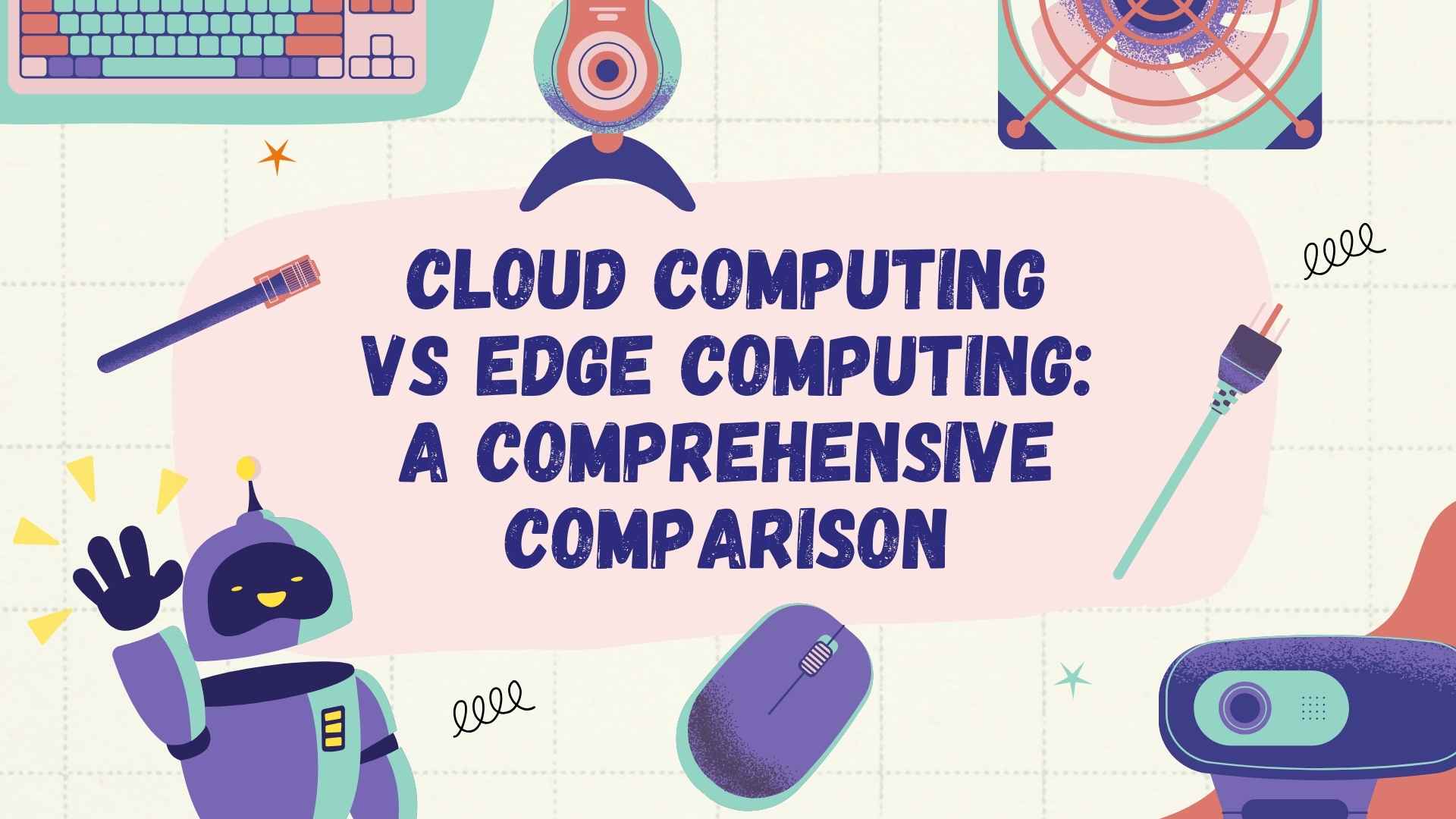In today’s digital era, businesses and individuals rely heavily on computing technologies to store, process, and manage data efficiently. Two prominent computing paradigms that have gained significant attention are Cloud Computing and Edge Computing. While both have unique advantages, they serve different purposes and are suitable for different scenarios. This article provides an in-depth comparison between Cloud Computing and Edge Computing, highlighting their benefits, challenges, and ideal use cases.
What is Cloud Computing?
Cloud Computing refers to the delivery of computing services—such as servers, storage, databases, networking, software, and analytics—over the internet (the cloud). Cloud providers like Amazon Web Services (AWS), Microsoft Azure, and Google Cloud Platform (GCP) offer scalable and cost-effective solutions for businesses of all sizes.
Key Features of Cloud Computing
- On-demand access: Users can access resources whenever needed.
- Scalability: Easily scales up or down based on demand.
- Cost-efficient: Reduces the need for on-premises infrastructure.
- Remote accessibility: Users can access services from anywhere.
- Centralized management: Provides a unified platform for managing applications and services.
Advantages of Cloud Computing
- Reduced IT Costs: Businesses do not need to invest in expensive hardware and maintenance.
- Business Continuity: Cloud backup ensures data recovery in case of system failures.
- Flexibility and Scalability: Companies can scale resources up or down as needed.
- Automatic Updates: Cloud service providers handle software and security updates.
- Collaboration Efficiency: Employees can work from anywhere and share information seamlessly.
Challenges of Cloud Computing
- Latency Issues: Data transmission over long distances can lead to delays.
- Security Concerns: Storing sensitive data on cloud platforms poses potential security risks.
- Internet Dependency: Requires a stable and high-speed internet connection.
- Limited Control: Users rely on third-party providers for service management and security.
What is Edge Computing?
Edge Computing is a distributed computing paradigm that brings computation and data storage closer to the data source or end-users. Instead of processing data in centralized cloud data centers, Edge Computing processes data near the device or sensor generating it. This technology is particularly useful for applications requiring real-time processing, such as IoT devices, autonomous vehicles, and smart cities.
Key Features of Edge Computing
- Decentralized Processing: Data is processed closer to the source.
- Low Latency: Faster response times due to reduced data travel distance.
- Improved Security: Sensitive data stays closer to the source, reducing exposure to cyber threats.
- Offline Functionality: Works even in environments with limited internet connectivity.
Advantages of Edge Computing
- Faster Data Processing: Reduces latency, making it ideal for real-time applications.
- Better Security & Privacy: Since data is processed locally, exposure to cyber threats is minimized.
- Reduced Bandwidth Usage: Less data needs to be transmitted to the cloud, reducing bandwidth costs.
- Increased Reliability: Works efficiently even in remote areas with poor connectivity.
- Improved Performance for IoT Devices: Smart devices can process information quickly and efficiently.
Challenges of Edge Computing
- Infrastructure Costs: Requires investment in on-site hardware.
- Complex Implementation: Deploying and managing multiple edge devices can be challenging.
- Limited Scalability: Scaling edge devices across multiple locations can be costly and complex.
- Security Risks at the Edge: While local processing improves security, edge devices can still be vulnerable to physical attacks.
Cloud Computing vs Edge Computing: Key Differences
| Feature | Cloud Computing | Edge Computing |
|---|---|---|
| Processing Location | Centralized data centers | Near the data source |
| Latency | Higher due to distance | Lower due to proximity |
| Security | Data is transmitted to cloud servers | Data remains local, reducing exposure |
| Scalability | Highly scalable | Limited scalability |
| Reliability | Dependent on internet connectivity | Works even in low-connectivity areas |
| Use Cases | Web applications, big data analytics, SaaS | IoT, autonomous vehicles, industrial automation |
Use Cases: When to Choose Cloud vs Edge Computing
Ideal Scenarios for Cloud Computing
- Big Data Processing: Cloud computing is best for analyzing large datasets.
- Enterprise Applications: Ideal for CRM, ERP, and SaaS applications.
- Remote Work & Collaboration: Employees can access cloud resources from anywhere.
- Media Streaming Services: Platforms like Netflix and YouTube rely on cloud infrastructure.
Ideal Scenarios for Edge Computing
- IoT Applications: Smart homes, industrial automation, and connected healthcare devices.
- Autonomous Vehicles: Self-driving cars require real-time data processing.
- Smart Cities: Traffic management, surveillance, and energy grid optimization.
- Healthcare Monitoring: Wearable devices that track patient health in real time.
The Future of Cloud and Edge Computing
As technology evolves, the demand for both cloud and edge computing is expected to rise. The future will likely see a hybrid approach where cloud and edge computing work together to deliver the best performance and efficiency. Businesses will use cloud computing for large-scale data processing while leveraging edge computing for real-time applications.
Some trends shaping the future include:
- 5G Integration: Faster and more reliable connectivity will enhance edge computing capabilities.
- AI & Machine Learning at the Edge: Real-time AI processing will improve efficiency in edge devices.
- Hybrid Cloud-Edge Solutions: A balanced approach where critical data is processed at the edge, and large-scale analytics happen in the cloud.
Conclusion
Both Cloud Computing and Edge Computing have unique strengths and applications. Cloud Computing excels in scalability, cost efficiency, and centralized management, while Edge Computing shines in low-latency processing, security, and real-time analytics. The choice between the two depends on the specific needs of an organization or application. By understanding their differences and use cases, businesses can make informed decisions to optimize their IT infrastructure for performance and efficiency.
